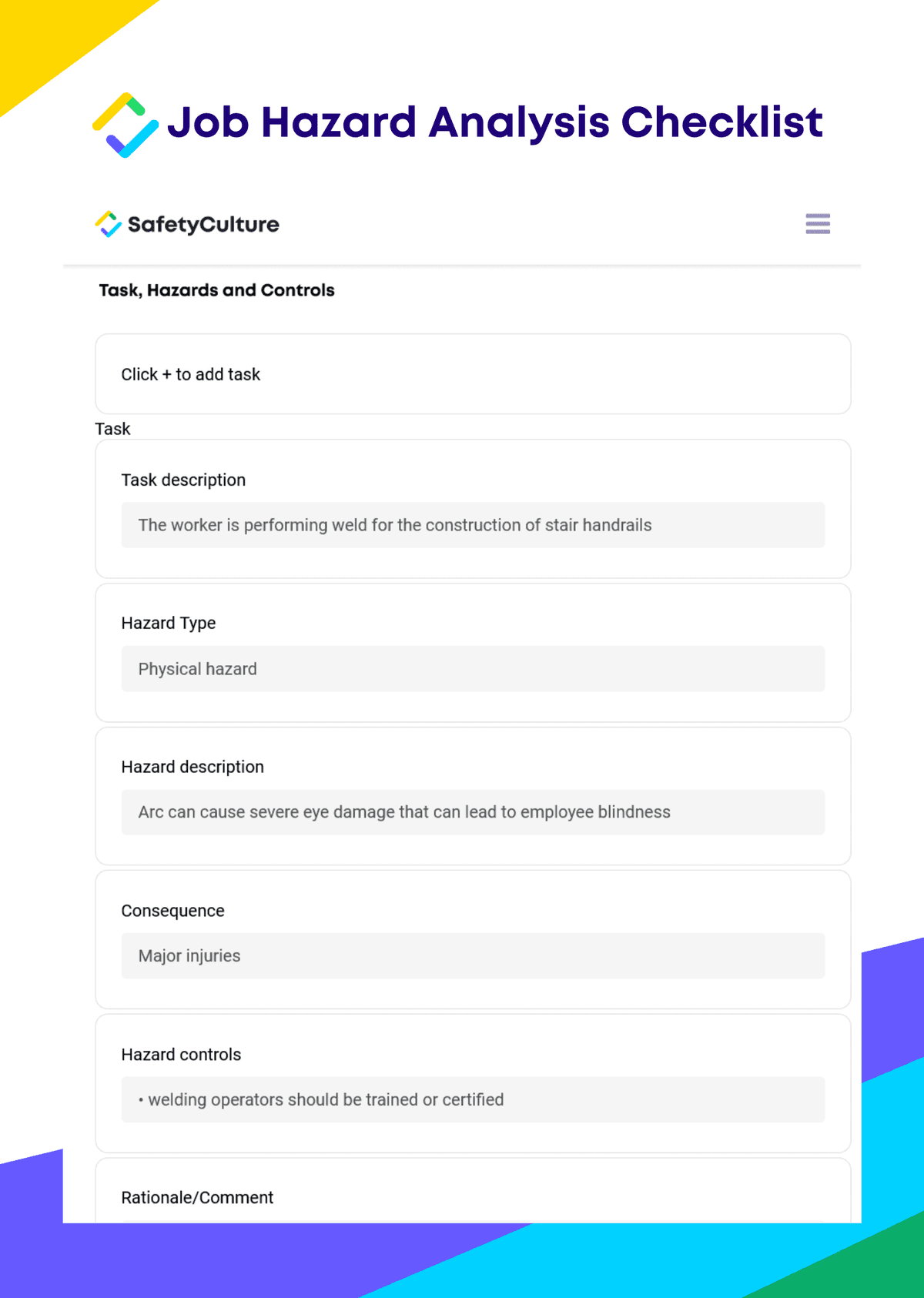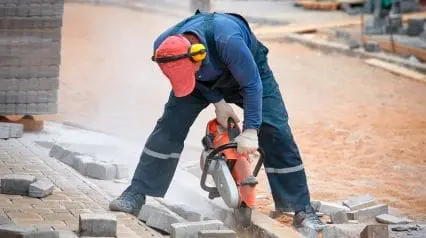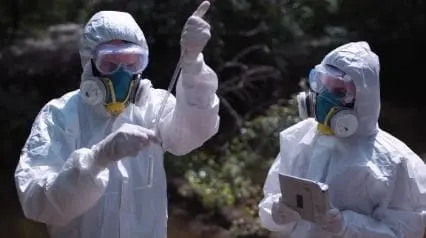What is Job Hazard Analysis?
A Job Hazard Analysis (JHA) is a technique that aims to identify work-related dangers before they occur. It focuses on key elements such as work environment, tasks, tools, and workers to help organizations control and mitigate the risks. JHA helps analyze work activities, processes, and equipment to identify rectification needs to develop a better work arrangement in accomplishing tasks. It also helps identify existing and potential hazards to determine the methods to eliminate them or protect employees against them. Being unable to perform JHA can lead to greater organizational damage including employee accidents, near misses, or worse, fatality.
What is the Difference Between JHA and JSA?
Job Hazard Analysis (JHA) and Job Safety Analysis (JSA) are commonly interchangeable as they have the same goal which is to identify workplace hazards and implement safety measures to reduce risks. JHA and JSA both contain three specific structures:
- assessing the steps or processes that make up a job;
- identifying existing or potential hazards at each step; and
- determining control measures to prevent risks.
In addition to these 3 structures, JHA adds risk assessment to the JSA procedure by including an evaluation of risk at each step to classify the likelihood, probability, and severity of consequences.
It’s important to incorporate the requirements of the Occupational Safety and Health Administration (OSHA) standards when performing JSA. It helps organizations ensure that the health and safety program complies with federal standards.
Is Job Hazard Analysis Required by OSHA?
Yes. Generally, OSHA requires hazard assessments and provides detailed guidelines for conducting a JHA. It aims to encourage employees to use the information to recognize workplace hazards so they can immediately report them for rectification and maintain a robust health and safety management system.
What are the 5 Steps of a Job Hazard Analysis?
Performing JHA processes may be tedious but doing so will most likely result in fewer worker injuries and illnesses, reduced compensation costs, increased productivity, and safer and more effective work methods. To conduct effective JHAs, follow these 5 simple steps:
- Encourage or require employee participation – Employee involvement in all phases of the process can help organizations to share responsibilities with their employees. As employees are more knowledgeable about the job, they are invaluable to finding hazards that help prevent work oversights and ensure quality results. Making employees active participants in the JHA process also helps organizations engage them in health and safety programs.
- Review worksite history – Worksite history analysis including accidents, near misses, and occupational illnesses can help organizations to prevent committing the same mistakes. It helps in reevaluating the adequacy of existing control measures and determining the gap for improvement needs.
- Perform a preliminary job review – Conduct an interview with employees and identify risks and hazards associated with their jobs and workplace environment. Gather ideas on how to eliminate or control these hazards by breaking down jobs into individual tasks to perform an accurate analysis. If an existing hazard poses a severe risk to the life and/or health of employees, immediate action should be taken even if JHA has not yet been completed.
- Set priorities for hazardous jobs – Create a list of identified hazards and determine the likelihood and severity of their risks. Evaluate their risk levels and set priorities on how to take action to eliminate the hazards.
- Develop preventative measures – Document the process of analysis so that you have enough information to describe each job. Check the hierarchy of controls to develop preventive measures that would help stop job hazards from occurring. Identify the hazard type and consequence to recommend appropriate hazards controls.
Improve your GRC management
Simplify risk management and compliance with our centralized platform, designed to integrate and automate processes for optimal governance.
Explore nowJob Hazard Analysis Example
Performing a JHA can be challenging but with proper guidance and communication with employees, jobs can be easily broken down into specific tasks for hazard identification and risk control implementation. Here is an example of a job hazard analysis:
Job Title: Welder
Analyst: Carl Joe
Date: January 21, 2022
Task Description: The worker is performing weld for the construction of stair handrails.
Hazard Type: Physical hazard
Hazard Description: Arc can cause severe eye damage that can lead to employee blindness
Consequence: Major injuries
Hazard Controls:
- Welding operators should be trained or certified.
- Ensure that all welding cables, wirings, and electrode holder insulations are in good working condition.
- Ensure that the work area is well-ventilated.
- Wear appropriate PPE.
- Arc shield should provide an extra layer of protection.
Create your own Job Hazard Analysis checklist
Build from scratch or choose from our collection of free, ready-to-download, and customizable templates.
Browse Job Hazard Analysis checklistStreamline JHA with SafetyCulture
JHA forms are traditionally printed on paper and are prone to damage or loss. Capturing photo evidence and collating hazard information to create a job hazard analysis report can be burdensome to safety officers when they use paper forms. But this hassle can be avoided by using SafetyCulture (formerly iAuditor), an inspection app accessible through web and mobile platforms that can help organizations ensure compliance with federal regulations. With SafetyCulture, you can:
- complete JHA inspections using mobile devices even offline;
- capture photo evidence, annotate, and add notes in-app to further explain hazards;
- assign immediate corrective actions to the appropriate persons; and
- generate and share reports anytime, anywhere with a few simple taps.
To get you started we have prepared a job hazard analysis form checklist to assist you with your inspection. We also have free checklist templates available in the Public Library that can be used by any employee. For existing PDF, Word Document, Excel, or PowerPoint files that the business is already using, they can be converted into SafetyCulture checklists for free up to 3 files.





